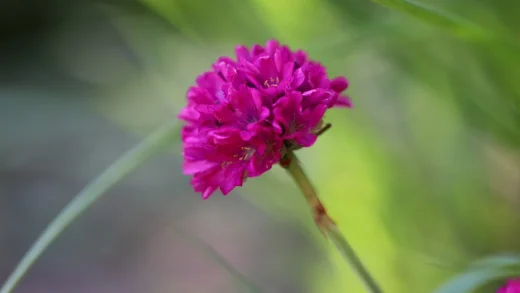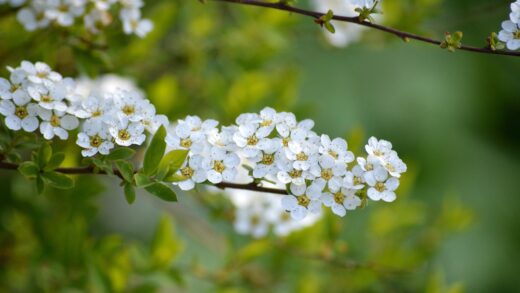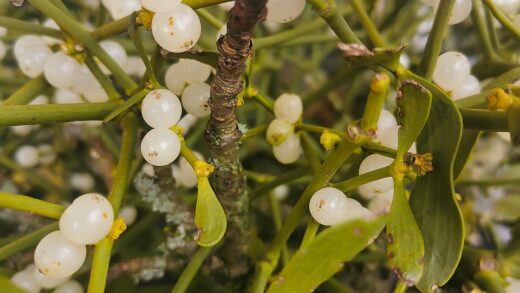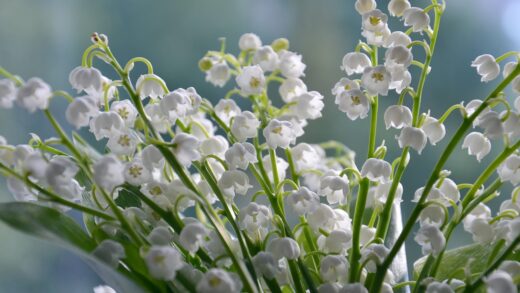Understanding the water requirements of the persian onion is fundamental to its successful cultivation and is a topic that deserves careful consideration. This ornamental allium, while relatively low-maintenance, has distinct needs when it comes to moisture throughout its annual growth cycle. Proper irrigation practices are key to preventing the most common problems, such as bulb rot, while also ensuring the plant has the resources it needs to produce its spectacular, large purple globes. The goal is to provide consistent moisture during periods of active growth and to allow for a period of relative dryness during its summer dormancy. Striking this balance is not difficult, but it requires an awareness of the plant’s natural rhythm and a response to the prevailing weather conditions. By mastering its irrigation needs, you can ensure your persian onions remain healthy, vigorous, and a stunning feature in your garden for many years.
The most critical period for providing adequate moisture is during the spring. This is when the plant is in its most active phase of growth, rapidly developing its broad leaves and the tall, sturdy flower stalk, or scape. During this time, from the moment the first shoots emerge until the flowers begin to fade, the soil should be kept consistently moist. A lack of water at this stage can lead to stress, resulting in stunted growth, weaker stems, and significantly smaller, less impressive flower heads. The plant is working hard to build the structures necessary for its magnificent display, and water is an essential component of this process, transporting nutrients and maintaining turgor in the plant cells.
The best approach to watering is to provide deep and infrequent applications of water rather than shallow, frequent sprinklings. Watering deeply encourages the roots to grow further down into the soil profile in search of moisture. This creates a more extensive and resilient root system, which makes the plant better able to withstand short periods of drought. You should allow the top few centimetres of the soil to dry out before watering again. A simple way to check this is to insert your finger into the soil; if it feels dry at a depth of two to three centimetres, it is likely time to water.
It is also important to consider the method of watering. Applying water directly to the base of the plant, using a soaker hose or a watering can, is much more effective than using an overhead sprinkler. This ensures that the water gets down to the root zone where it is needed most, and it minimizes wastage through evaporation. Furthermore, watering at the base helps to keep the foliage dry. Wet leaves, particularly in humid conditions or overnight, can create an ideal environment for the development and spread of fungal diseases like downy mildew, so keeping the foliage dry is a good preventative measure.
The importance of soil drainage
While providing sufficient water during the growing season is crucial, it is equally, if not more, important to ensure the soil has excellent drainage. Persian onions are bulbous plants, and like most bulbs, they are highly susceptible to rot if their roots are left sitting in waterlogged soil. This is the single most common reason for the failure of ornamental alliums in gardens. No amount of careful watering can compensate for soil that does not drain freely, so addressing this issue before planting is an absolute necessity for long-term success.
More articles on this topic
The ideal soil for persian onions is a sandy loam that allows excess water to drain away quickly while still retaining enough moisture for the plant’s needs. Heavy clay soils, which are common in many areas, tend to hold onto water for long periods, creating the anaerobic conditions that promote the fungal pathogens responsible for bulb rot. If you have heavy clay, it is essential to amend it by incorporating generous amounts of organic matter, such as garden compost or well-rotted manure, along with coarse grit or sharp sand. This will improve the soil structure, creating more air pockets and allowing water to percolate through more easily.
For gardeners with particularly heavy or waterlogged soil, another effective strategy is to plant the bulbs in raised beds. A raised bed, filled with a high-quality, free-draining soil mix, elevates the bulbs above the surrounding saturated ground, providing them with the well-drained environment they need to thrive. This can be an excellent solution in areas with a high water table or where improving the native soil is impractical. Planting on a natural slope can also be beneficial, as gravity will help to pull excess water away from the root zone.
The connection between drainage and irrigation is direct and inseparable. In a well-drained soil, you can water thoroughly and deeply during the growing season, confident that any excess moisture will drain away and not cause harm. In a poorly drained soil, however, the same amount of water could be a death sentence for the bulbs. Therefore, before you even consider your watering schedule, you must first ensure that the fundamental requirement of good drainage has been met. This groundwork is the foundation upon which all other successful cultivation practices are built.
Watering during different life stages
The water needs of the persian onion change significantly throughout its life cycle, and tailoring your irrigation practices to these different stages is key. In the autumn, after the bulbs have been planted, a thorough initial watering is beneficial. This helps to settle the soil around the bulbs and provides the moisture required to stimulate the development of the root system. Once this initial watering is done, the bulbs will require very little, if any, supplemental water throughout the winter, as the cooler temperatures and natural rainfall are usually sufficient. The primary goal during this period is for the bulb to establish roots, not to produce top growth.
More articles on this topic
As spring arrives and the soil begins to warm, the bulbs enter their active growth phase. This is when their demand for water is at its peak. From the emergence of the first green shoots through the development of the foliage and the flower scape, you should monitor the soil moisture regularly. In periods with little rainfall, you will likely need to provide supplemental water every week to ten days, ensuring the soil is soaked to a good depth. This consistent supply of water is vital for the plant to reach its full potential in both size and floral display.
The need for water begins to decrease as the flowering period comes to an end. Once the vibrant purple flowers start to fade, you can begin to gradually reduce the frequency of watering. This signals to the plant that it is time to start winding down its active growth and prepare for dormancy. As the leaves begin to yellow and wither, the plant is drawing the last of its energy back down into the bulb for storage. Continuing to water heavily at this stage can interfere with this natural process and may increase the risk of the bulb rotting as it enters its dormant phase.
By the time the foliage has completely died back in the summer, the persian onion is fully dormant. During this period of rest, the bulb prefers to be in warm, dry soil, conditions that are similar to its native habitat in Central Asia. It is crucial to withhold almost all supplemental irrigation during the summer months. Excessive moisture in the soil while the bulb is dormant is a leading cause of bulb rot. In most climates, the occasional summer shower will be sufficient, and in many cases, no extra water will be needed at all until the cycle begins again in the autumn.
Signs of overwatering and underwatering
Being able to recognize the signs of both overwatering and underwatering is a valuable skill for any gardener. For persian onions, the symptoms of overwatering are often the most severe and can be irreversible. The most common sign is the yellowing and wilting of the leaves, which might seem counterintuitive. However, this occurs because the waterlogged soil has deprived the roots of oxygen, causing them to rot and die. Without a healthy root system, the plant can no longer take up water and nutrients, leading to the wilting of the foliage. If you suspect overwatering, you should stop irrigating immediately and check the bulb; if it feels soft and mushy, it has likely succumbed to rot.
Another consequence of overwatering, or more accurately, of the poorly drained soil that leads to it, is the failure of the bulb to emerge at all in the spring. If your persian onions do not appear, it is worth carefully excavating the area where they were planted. More often than not, you will find a rotted bulb that has perished during the wet winter months. This is a clear indication that the soil drainage in that location is inadequate and needs to be improved before you attempt to plant alliums there again.
The signs of underwatering, while less likely to be fatal to the plant, will certainly affect its performance. During the active spring growth period, insufficient water will result in stunted growth. The leaves may be smaller than usual, and the flower stalk may not reach its full, impressive height. The flower heads themselves will also be noticeably smaller and may not open fully or last as long. The leaves may also appear wilted, but unlike with overwatering, the soil will be clearly dry to the touch, and the plant will typically revive quickly after a thorough watering.
In addition to stunted growth, the tips of the leaves may turn brown or yellow if the plant is consistently underwatered during its growth phase. This is a sign of water stress as the plant struggles to transport enough moisture to its extremities. While an established persian onion is relatively drought-tolerant once it enters dormancy, it is certainly not drought-tolerant during its period of active growth. Paying close attention to the plant’s appearance and the condition of the soil will allow you to fine-tune your watering practices and provide the optimal amount of moisture at every stage.
Irrigation strategies for different climates
The specific irrigation strategy you adopt for your persian onions will need to be adapted to your local climate and weather patterns. In regions with a Mediterranean climate, characterized by cool, wet winters and hot, dry summers, the natural rainfall pattern aligns almost perfectly with the needs of the persian onion. The winter rains provide the moisture needed for root establishment, and the spring showers fuel the active growth. The dry summer ensures the bulbs can enjoy their preferred dormant period without the risk of rotting. In such climates, very little, if any, supplemental irrigation may be required throughout the entire year.
In contrast, gardeners in climates with dry springs and wet summers will need to take a more active role in managing soil moisture. In these regions, it will be essential to provide regular supplemental water throughout the spring to ensure the plants do not suffer from drought stress during their critical growth phase. Then, as summer arrives with its increased rainfall, the primary concern shifts to protecting the dormant bulbs from excessive moisture. This is where excellent soil drainage or planting in raised beds becomes absolutely critical to the long-term survival of the plants.
In temperate climates with moderate rainfall throughout the year, the approach will be one of observation and response. You will need to monitor the soil moisture levels and the amount of natural rainfall to determine when supplemental watering is necessary. During a particularly dry spring, you will need to irrigate regularly. Conversely, if the spring is unusually wet, you may not need to water at all. The key is to avoid a rigid watering schedule and instead to water only when the plants and the soil indicate that it is needed.
For gardeners growing persian onions in containers, the watering regime will be different again. Soil in containers tends to dry out much more quickly than garden soil, so more frequent watering will be necessary during the spring growth period. It is crucial to use a high-quality, free-draining potting mix and to ensure the container has ample drainage holes. You should check the moisture level in the pot every few days and water thoroughly whenever the top few centimetres of the mix feel dry. As with garden-grown plants, you should reduce and then stop watering as the foliage dies back and the bulb enters dormancy.


















